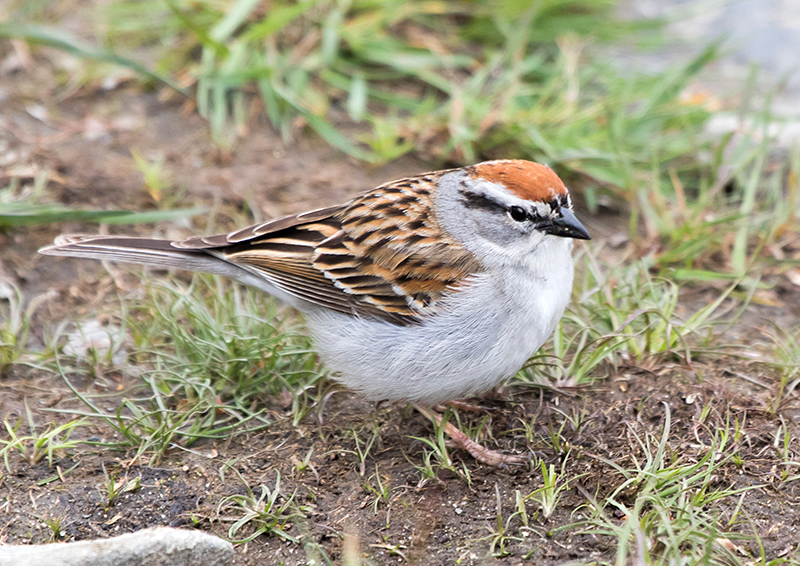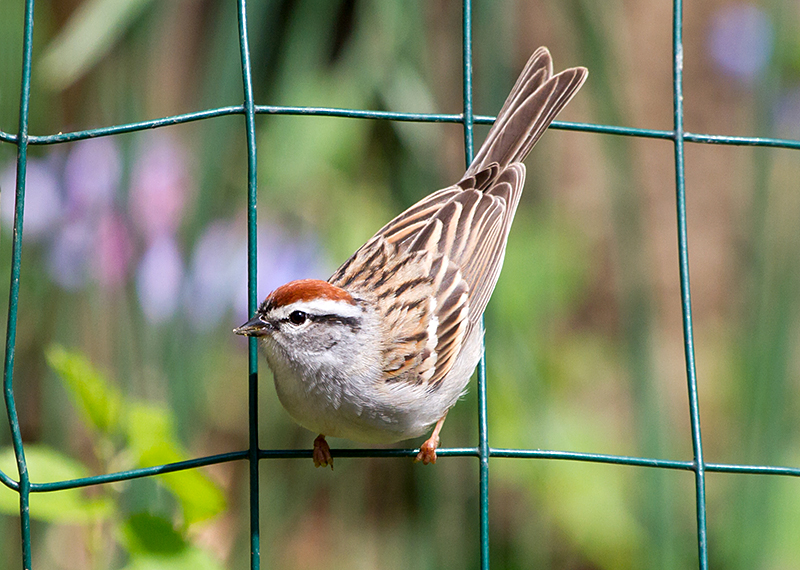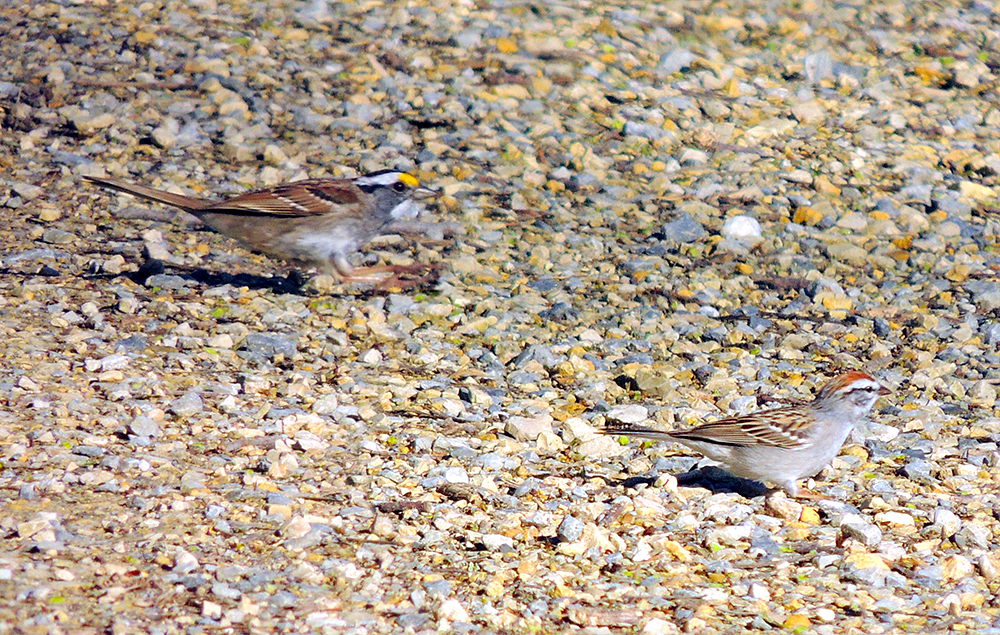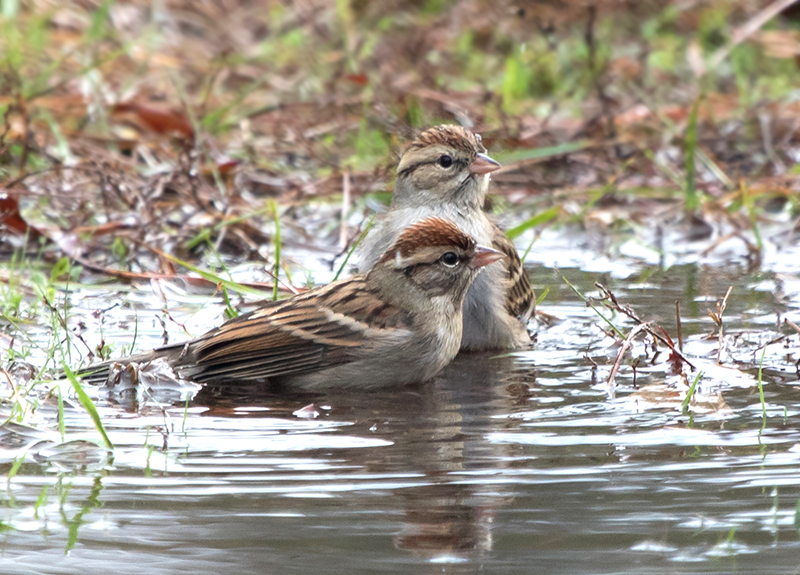| Year-round Resident |
Spring: Chipping Sparrows are year-round residents in the Washington metro area, which is near the northern edge of their wintering range and the southern edge of their breeding range. They breed in the Washington area, but not at Monticello Park, where they are uncommon. Many pass through the Washington area on their way to breeding grounds in the northern United States and Canada. They are most likely to show up at Monticello during the fourth week in April.
Fall: Chipping Sparrows are virtually never seen at Monticello during the fall.
Where to See Them in the Park
Chipping Sparrows can be seen in the mid-level of trees, in low vegetation, or on the ground. They sometimes go into the stream to bathe and drink.
Physical Description


The most prominent fieldmark of Chipping Sparrows is their bright chestnut crown. They have a thin black line through the eye and a broad white line over the eye. The underparts are gray and unmarked. The sexes are similar. On young birds, there are fine black streaks in the crown.

Chipping Sparrows are about 20 percent smaller than White-throated Sparrows.

They are gregarious, and sometimes, two or more will bathe together.
Vocalizations

The Chipping Sparrow's song is a loud trill, which sounds like a series of chips. The trill can be delivered in different ways. Sometimes, it is dry, other times, sweet. The speed with which it is delivered also varies. Chipping Sparrows are persistent singers, and their song can be confused with the trills of other species.
Hear the vocalizations of the Chipping Sparrow.Notes
Chipping Sparrows remain abundant in North America, even though their population has declined by about a third since the mid-1960s. During the winter, you frequently see them foraging on the ground in urban and suburban parks, such as Fort Ward Park in Alexandria. They formerly nested mostly in conifer forests, but they have adapted well to changes in habitat and now will nest in other types of trees.
Origin of Names
Common Names: Chipping from their song. Sparrow from the Anglo-Saxon spearwa, which means flutterer.
Genus Name: Spizella means finch.
Species Name: Passerina means sparrow-like.
Chipping Sparrow video footage
Return to the Index
